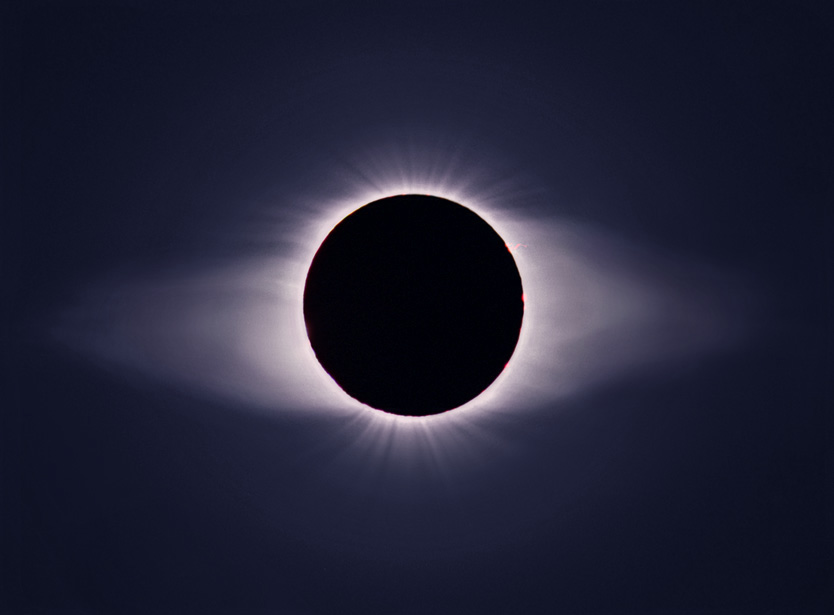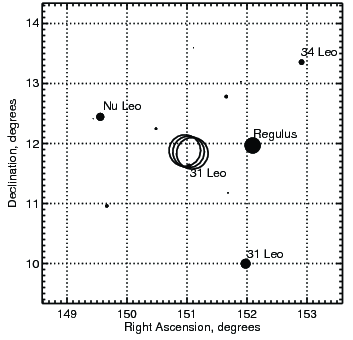
Courtesy Fred Espenak |
Eclipse Star Maps
and how to make them |

|

Courtesy Fred Espenak |
Eclipse Star Maps
and how to make them |

|
During a total eclipse of the Sun, the stars and planets suddenly become visible. For observations of the corona, one might think of these as a nuisance, but they have their uses! In these pages we provide charts to the stars in the background fields of the next few total eclipses, and describe how to make more such maps. Such information is widely available via excellent software and websites such as NASA's Solar Eclipse Page, but we also provide instructions on how to make them in .ps format, starting from raw coordinate lists.
Historically these stars have been important, since they provided the basis for one of the early tests of Einstein's theory of relativity. A British eclipse expedition in 1919 successfully determined that the starlight was deflected by the amount that Einstein had predicted, thus setting the stage for the major development of astrophysical research on gravitational lensing.
As a curious footnote to this, and one of the main reasons for the data presented in these pages, there has been very little use of modern tools (such as CCD detectors) to re-do the 1919 observations. This is in some sense not really necessary, because the correctness of Einstein's theory has been abundantly established, but it would be interesting to check it again in this classical manner.
